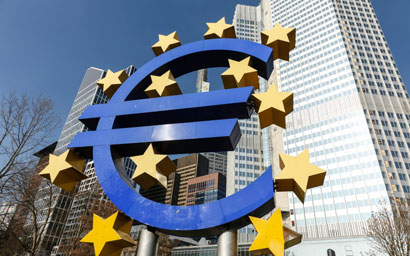Concern over Italy’s finances is reaching fever pitch as yields on ten-year Italian bonds exceeded 7%, a dangerous and unsustainable level that piles weight on the country’s heavy debt burden.
The markets are worried that Italy’s government will not manage to control sovereign debts worth 120% of the country’s GDP. The government is hoping to push through an economic package designed to cut its debt and promote growth by Saturday, after which prime minister Silvio Berlusconi has promised to resign.
But even if Berlusconi’s conservative coalition is replaced by a ‘technical government’, as some hope, there is a daunting task ahead.
“Genuine economic reform will take months, or more likely years, to enact and carries huge implementation risk,” said Nick Gartside, international chief investment officer for global fixed income at JP Morgan Asset Management.
“Meanwhile, every day that yields are at unsustainable levels causes real damage to the real economy and ultimately carries a higher total cost.”
Ironically, Italy’s economy is performing better than many other eurozone nations’. It is one of only a handful of European states that is running a primary surplus, which means that, excluding debt interest payments, its earnings are greater than its spending.
This is very different to Greece, which is still running a primary deficit despite efforts to introduce austerity measures.
But Italy’s debts are so big that they they threaten to ruin the country despite its comparatively strong economy.
Mark Dowding, senior portfolio manager at BlueBay Asset Management has calculated that, assuming a growth potential of 3%, Italy must achieve a primary surplus of 6% to maintain its debt-to-GDP ratio at current levels.
This would represent “a higher level of primary surplus than Italy has ever historically achieved in the past 20 years, or indeed any country in Europe, with the sole exception of Belgium during the early 1990s”, said Dowding.
It would also represent a substantial fiscal tightening as Italy’s primary surplus is expected to be less than 1% this year.
While Italy wrestles with its debt problem, markets across Europe are infected with panic. Italy is the third-biggest economy in the eurozone and deemed too big to fail, yet the European bailout fund seems inadequate to save it.
“The problem is that the EU doesn’t have a plan to support Italy, which is weighing on market confidence,” said Barry O’Neill, head of foreign exchange sales at Clear Currency.
“The EFSF [bailout fund] isn’t any bigger than it was in June when it was extended to €440 billion and it is unlikely that cash-rich sovereign funds will want to invest in the current environment especially when the EU wants to implement a 50% haircut on holders of Greek debt and Italy is so close to bailout.”
©2011 funds europe





